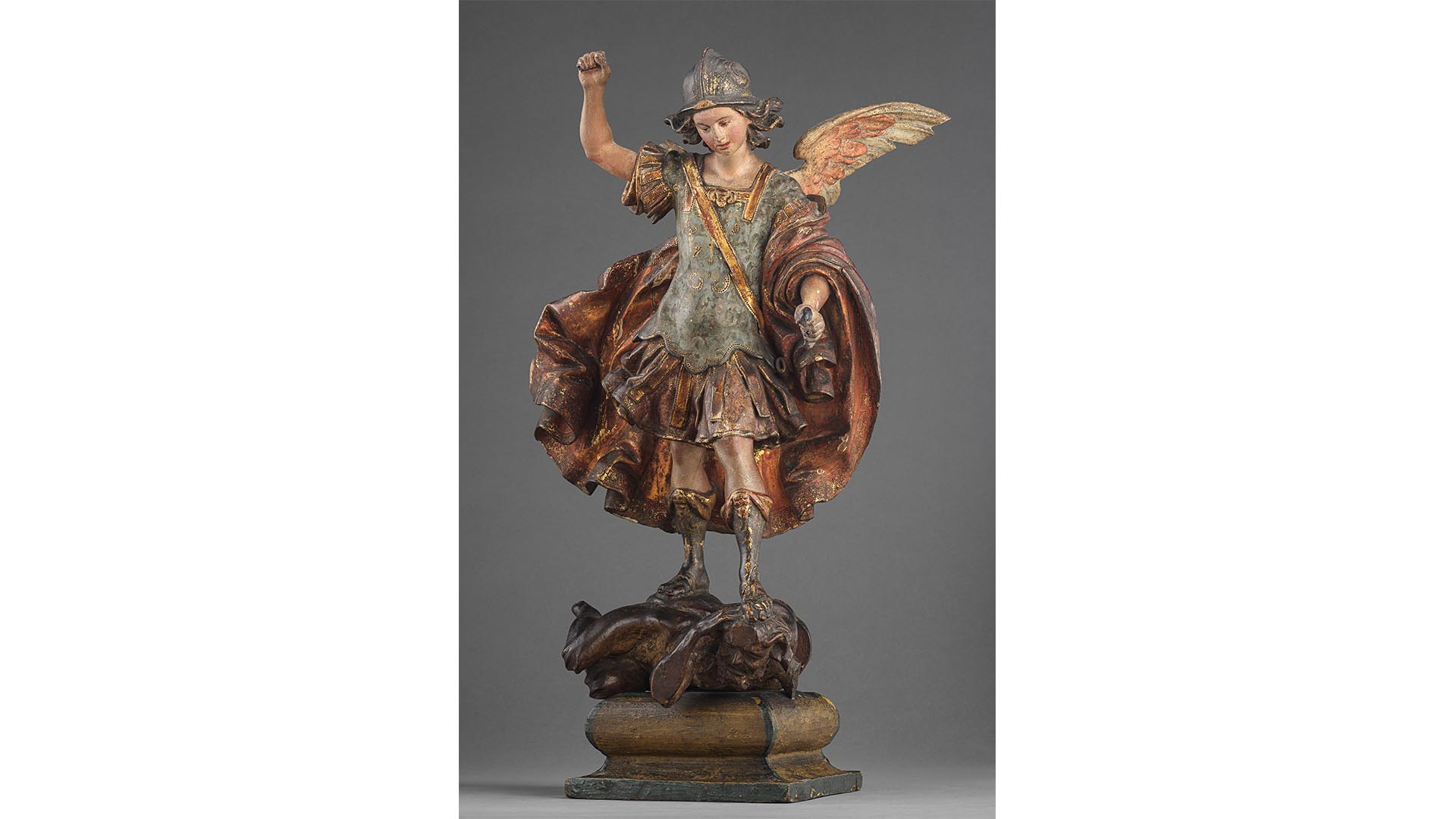Recognizing one of Spain's finest artists—and the country's first documented woman sculptor.
The Figure of St. Michael in ROM’s collection was made by the Baroque artist, Luisa Roldán (1652–1706), who is the first documented woman sculptor in Spain.
This was an exceptional feat in 17th-century Spain where it was very difficult for a woman to pursue a career as a professional artist.
Roldán grew up during a time when women were prohibited from attending academies and securing apprenticeship programs for the formal training necessary to enter the guild system. Gender norms and prevailing ideologies espoused that the woman’s role was in the private domain, fulfilling familial duties of a wife and mother or, alternatively, living a life devoted to the church.
In practice though, societal expectations of women were also very much dependent on the socio-economic status of the family. And like many female artists in the Renaissance and Baroque period, Roldán was born into the family business. Her father was Pedro Roldán (1624–1699), a prominent sculptor who had a professional workshop producing polychromed wooden religious sculptures much like the ROM’s St. Michael.
It was in her father’s workshop that Roldán honed her artistic and technical abilities, learning drawing, painting, and sculpture in both clay and wood. From a young age she and her siblings would have trained alongside male apprentices in all the production processes of this busy shop, with Roldán eventually becoming one of the most talented members of the workshop.
It was also here that she met her future husband, a fellow apprentice, Luis Antonio de los Arcos. Without her father’s blessing and consent, the pair were married in 1671, after Roldán appealed to the Catholic authorities for permission to marry.
At the age of 19, Roldán moved out of her family home to live with her in-laws, which was not customary. Catherine Hall-van den Elsen, one of the leading scholars on Luisa Roldán, has theorized that this may be evidence of Pedro’s disappointment after losing one of his most talented workers at the pinnacle of his career. It is unclear whether the pair continued working for Pedro, but as early as 1677, they began receiving independent commissions, eventually establishing their own independent workshop where Luisa became the principal sculptor. With Roldán’s growing reputation, the family moved in 1688 to the Imperial city of Madrid. Here, she further developed her style in polychromed wood sculptures, while pioneering a new genre of terracotta devotional sculptures created for the Spanish Court, private aristocratic patrons, and for the growing domestic market.
Made of polychromed wood, the Figure of St. Michael is Roldán’s earliest known work held in a North American collection likely being produced in the 1670s.
There was high demand for this type of devotional work in Seville, where it was commissioned for both public and private display in altarpieces or used in processional floats carried through the streets celebrating religious holidays and festivals that Seville was renowned for.
Although the provenance is still unknown, the sculpture is representative of Roldán’s earlier style that she produced while living in southern Spain when she was starting to forge her own path as an independent sculptor producing small figures for altars in private chapels and convents. This small work also foreshadows the dynamism of one of her most famous sculptures that she created in 1692 for the Court of Carlos II—a life sized polychromed wood version of St. Michael Smiting the Devil.
Overcoming the societal limitations placed on female artists, Luisa Roldán achieved considerable success during her lifetime. In 1692, she received the title of Sculptor to the Royal Household and was appointed court sculptor to the Hapsburg King, Carlos II. Despite his death in in 1700, Roldán maintained her position as court sculptor under the new Bourbon King Philip V—a position she held until her death in 1706. The same year she was honoured with the Accademica de Merito by the prestigious Roman Academy, Accademia de S. Luca for her significant contribution to sculpture, widely regarded as one of Spain’s finest sculptors.

